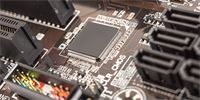SSDs have practically replaced conventional hard disks (HDDs) in situations where performance is at stake. But when you’re building a network attached storage (NAS) or need a lot of capacity and are on a budget, mechanical drives with magnetic platters are still the best option. However, older drives that are heavily used may no longer be as reliable as before, reports Ars Technica.
Dates that this week shared by Backblazedraw attention to the fact that the average failure rate (AFR) of a hard drive can increase with age. Backblaze is an online data backup and archiving company for individuals and small businesses. It offers a simple and affordable way to keep data safe and accessible over the Internet.
The older, the greater the chance of failure
Backblaze has published annual reports since 2013 analyzing the AFR of hard drives in its data centers. This year, it tracked 230,921 hard drives of 29 models from HGST, Seagate, Toshiba and WDC with capacities ranging from 4 to 16 TB. Only models that the company operates in the number of at least 60 units and that were not previously used for testing were included.
It must be emphasized that the tested samples consist only of disks that Backblaze has in its data centers. They are of various ages, with some having been used more than others. The report nevertheless provides a unique view of the results of long-term use of hard drives.

Disc failures in 2022
The paper provides evidence that the AFR of hard drives increases with age. That’s not a surprising finding, but Backblaze provides data to illustrate what it looks like. If we were to plot the number of failures over time, it would be shaped like a bathtub – the number of failures is highest for brand new drives, then decreases and then increases again as the product ages.
Last year, the company focused primarily on building new data centers in Stockton, California, and Reston, Virginia. This year, they plan to focus on replacing older 4GB and 6GB Seagate drives with newer 16TB models.
Specific numbers
The average hard disk failure rate in Backblaze data centers was 1.01% in 2021 and last year rose to 1.37%. “The aging of our HDD fleet really seems like the most logical reason for the increased AFR in 2022. We could dig deeper into this, but it’s probably beside the point at this point.” the company states on its blog.

HDD failure rate according to capacity
The oldest (average age 92.5 months) Backblaze hard drive tested was a 6TB Seagate drive (ST6000DX000). Its AFR was 0.11% in 2021 and 0.68% in 2022. According to Backblaze, it “overall a very decent number, especially after nearly eight years”. For Toshiba 4TB drives (MD04ABA400V) the average age was 91.3 months. In 2021, this disc had an AFR of 2.04%, and last year this proportion increased to 3.13%.
In the table grouping AFR by manufacturer se Seagate ranked first followed by Toshibahowever, the result is influenced by the fact that most Seagate drives are much older than the drives of the other tested brands.
“In general, Seagate drives are cheaper and tend to have a higher failure rate in our environment,” by Backblaze. “However, their failure rate is usually not high enough to make them less cost-effective over their lifetime. You could make a good argument that many of the Seagate drive models are just as cost-effective for us as the more expensive drives.”



